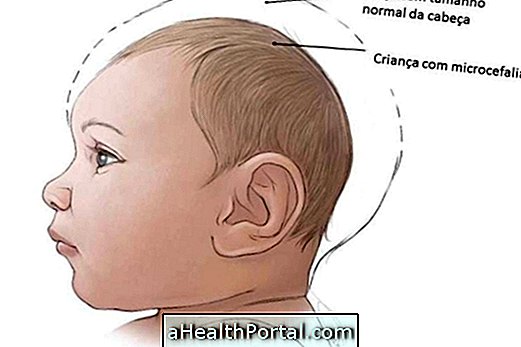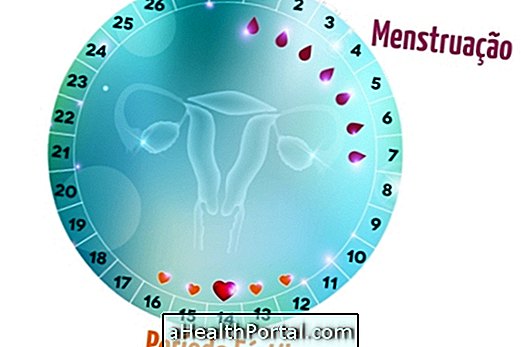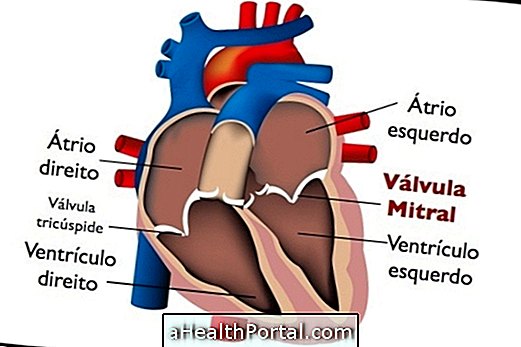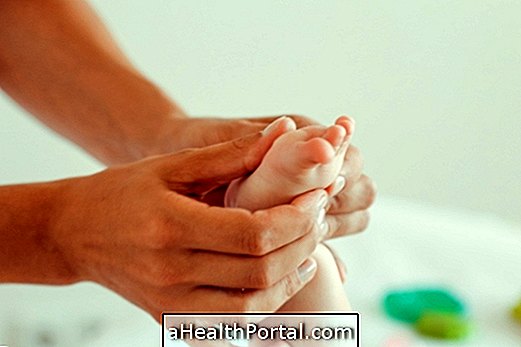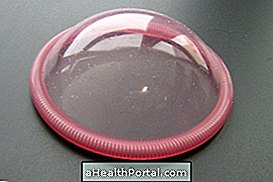Rett syndrome, also called cerebro-trophic hyperammonemia, is a rare genetic disease that affects the nervous system, affecting almost exclusively girls.
Children with Rett syndrome cease to play, becoming isolated and losing their learned skills, such as walking, talking or even moving their hands giving rise to involuntary movements of the hands that are characteristic of the disease.
Rett Syndrome has no cure but can be controlled with the use of drugs that reduce seizures, spasticity and breathing, for example. But physiotherapy and psychomotor stimulation are of great help, and should preferably be performed daily.
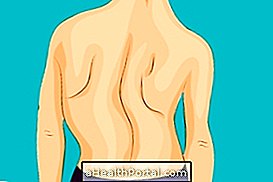

Characteristics of Rett Syndrome
Although the symptoms that most attract the attention of the parents appear only after the 6 months of life, the baby with Rett syndrome presents hypotonia, and can be seen by the parents and the family, as a baby very 'nice' and easy to take care of.
This syndrome develops in 4 phases and sometimes the diagnosis only comes at around 1 year of age, or later, depending on the signs that each child presents.
First phase occurs between 6 and 18 months of life, and there are:
- Stop in child development;
- The cephalic perimeter does not follow the normal growth curve;
- Decreased interest in other people or children, with a tendency to isolate themselves.
Second stage, occurs from 3 years and can last weeks or months:
- The child cries a lot, even for no apparent reason;
- The child always remains irritated;
- Repetitive movements arise with the hands;
- Respiratory changes appear, with stopping of breathing during the day, moment of increase of respiratory rate;
- Seizures and attacks of epilepsy throughout the day;
- Sleep disorders may be common;
- The child who already spoke, can stop talking completely.


Third phase, which occurs around 2 and 10 years ago:
- There may be some improvement of the symptoms presented so far and the child may again show interest in others;
- The difficulty to move the trunk is evident, there is difficulty of balancing standing;
- Spasticity may be present;
- There is a development of scoliosis that impairs lung function;
- It is common to grind teeth during sleep;
- Feeding may be normal and the child's weight also tends to be normal, with slight weight gain;
- The child may be short of breath, swallowing air, and having too much saliva.
Fourth phase, which occurs around the age of 10 there is:
- Slow motion and worsening of scoliosis;
- Mental deficiency becomes severe;
- Children who were able to walk lose that ability and need a wheelchair.
Children who can learn to walk still have some difficulty moving around and usually walk up on their toes or take their first steps back. Besides, they may not be able to get anywhere, and their walk seems to be without purpose because she does not walk to meet another person, or to look for any toys, for example.
How is the diagnosis made?

?????? The diagnosis is made by the neuropediatrician who will analyze each child in detail, according to the signs presented. For diagnosis, at least the following characteristics must be observed:
- Development apparently normal up to 5 months of life;
- Size of head normal at birth, but that does not accompany the ideal measurement from the 5 months of life;
- Loss of ability to move hands normally around 24 and 30 months, giving rise to uncontrolled movements such as twisting or bringing hands to mouth;
- The child stops interacting with other people at the onset of these symptoms;
- Lack of coordination of trunk movements and uncoordinated walking;
- The child does not speak, can not express himself when he wants something and does not understand when we talk to him;
- Serious delay in development, with sitting, crawling, talking and walking much later than expected.
Another, more reliable way of knowing if this syndrome really is is by doing a genetic test because about 80% of children with classical Rett Syndrome have mutations in the MECP2 gene. This examination can not be done by the SUS, but it can not be denied by private health plans, and if this happens it should be filed with the court.
Life expectancy
Children diagnosed with Rett Syndrome can live a long time, passing the age of 35, but may suffer sudden death during sleep while still babies. Some conditions that favor serious complications that may be fatal include the presence of infections, respiratory diseases that develop due to scoliosis and poor lung expansion.
The child may attend school and may learn certain things, but ideally they should be integrated into special education, where their presence will not draw much attention, which could hinder their interaction with others.
What Causes Rett Syndrome
Rett syndrome is a genetic disease and usually affected children are the only ones in the family, unless they have a twin brother, who will probably have the same disease. This disease is not associated with any attitude that has been taken by the parents, and therefore, they do not have to feel guilty.
Treatment for Rett Syndrome
The treatment should be done by the pediatrician until the child is 18 years old and must be followed by the general practitioner or neurologist.
The consultations should take place every 6 months and in them can be observed the vital signs, height, weight, correctness of the medication, evaluation of the child development, changes in the skin as presence of decubitus wounds, which are the bedsores that can become infected, increasing the risk of death. Other aspects that may be important are assessment of development and of the respiratory and circulatory system.
Physiotherapy should be performed throughout the life of the person with Rett Syndrome and are useful for improving tone, posture, breathing and techniques such as Bobath may be used to aid child development.
Psychomotor stimulation sessions can be performed about 3 times a week and may help motor development, decrease the severity of scoliosis, drool control, and social interaction, for example. The therapist can indicate some exercises that can be performed at home by the parents so that the neurological and motor stimulus is performed daily.
Having a person with Rett Syndrome in the home is a tiresome and difficult task. Parents can become very emotionally worn out and therefore may be advised to be followed by psychologists who can help deal with their emotions.





